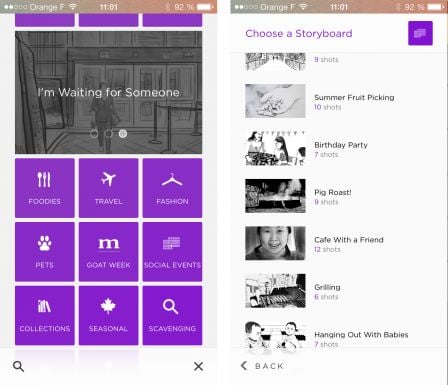

- #DIRECTR APP FOR MAC INSTALL#
- #DIRECTR APP FOR MAC UPDATE#
- #DIRECTR APP FOR MAC PASSWORD#
- #DIRECTR APP FOR MAC DOWNLOAD#
- #DIRECTR APP FOR MAC MAC#
#DIRECTR APP FOR MAC DOWNLOAD#
pfpkg files) in a certain relative path (directory structure) on your Mac, as indicated by the structure of their respective download URLs. Step 3: Place the downloaded packages (.pkg and. To flush DNS cache, type “ sudo killall -HUP mDNSResponder” in the command line and hit return. Note: Sometimes, you might need to flush the DNS cache for the changes to take effect. Now, whenever any request is generated from your computer to the root domain (), it will point to your localhost.
#DIRECTR APP FOR MAC PASSWORD#
#DIRECTR APP FOR MAC MAC#

You may find out the URL of the latest macOS Sierra package files from the comments below or by searching on the Internet for it. Hence the workaround mentioned here will not work, unless you know the URL of the latest package file and create the directory structure on localhost based on the same.īefore downloading the package, ensure that it is the latest version of macOS Sierra released on the MAS. If the latest version of macOS Sierra available on the Mac App Store is a different one, MAS will fetch it from a different location. # Update: Here, we have mentioned the URL of the package file for macOS 10.12. pfpkg file, which tells Mac App Store where to look for the. When you have downloaded them, you’ll have two packages. Step 1: Download the macOS Sierra package files from their respective URLs. If you’re new here, just follow the steps mentioned in this section to download macOS Sierra directly without the Mac App Store. Only, instead of one package, there are two this time. If you’re already familiar with downloading El Capitan from outside of MAS, this method also follows similar steps.
#DIRECTR APP FOR MAC UPDATE#
Note: If you use a Download Manager like Folx to download the raw packages, you’ll also be able to achieve higher download speeds compared to what you’d get if you’d downloaded the update from MAS.

Once the files are downloaded to the computer, we’ll configure our system in such a way that Mac App Store fetches the raw packages directly from the local repository (localhost) instead of from the Apple servers. In this workaround, we’ll directly download the raw packages from Apple servers using the web browser or a dedicated download manager.
Only when MAS processes these files during the download, are they converted to an installable (.app) file that can run on your Mac. These packages are not directly installable on your Mac. Ideally, when you download macOS Sierra from the Mac App Store, some raw package files will be downloaded to your computer.
#DIRECTR APP FOR MAC INSTALL#
3 macOS Sierra Bootable Installer (macOS Sierra DMG)ĭownload and Install macOS Sierra without MAS.1 Download and Install macOS Sierra without MAS.It greatly smoothes the process of making a complex installer, and has an excellent GUI interface. I am in no way connected to it, but I use it to build the installer for an app that I work on. There is nothing wrong with installers, contrary to the answer from although there is also nothing wrong with distributing your app through the App Store, or as a dmg.įor setting up your own installers, I highly recommend a program called Packages ( ). They're also great for providing configurability of the installation experience (optional extras), or hand-holding for an unusual type of installation that the user might not otherwise understand, or extra work (configuration scripts, permissions modifications, authentication, compatibility checking, etc.) that need to run during the installation process. Installers are great if you want various things to be placed in different spots – app here, documentation there, support files over here, etc.


 0 kommentar(er)
0 kommentar(er)
